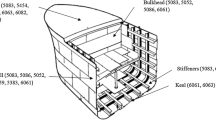Abstract
Many years experience of the operation of high stress (>72% specified minimum yield strength, SMYS) gas pipelines and statistical analysis results of pipeline incidents showed that the operating pipelines at stress levels over 72% SMYS have not presented problems in USA and Canada, and design factor does not control incidents or the safety of pipelines. Enhancing pipeline safety management level is most important for decreasing incident rate. The application history of higher design factors in the U.S and Canada was reviewed. And the effect of higher factors to the critical flaw size, puncture resistance, change of reliability with time, risk level and the arrest toughness requirements of pipeline were analyzed here. The comparison of pipeline failure rates and risk levels between two design factors (0.72 and 0.8) has shown that a change in design factor from 0.72 to 0.8 would bring little effect on failure rates and risk levels. On the basis of the analysis result, the application feasibility of design factor of 0.8 in China was discussed and the related suggestions were proposed. When an operator wishes to apply design factor 0.8 to gas pipeline, the following process is recommended: stress level of line pipe hydro test should be up to 100% SMYS, reliability and risk assessment at the design feasibility or conceptual stage should be conducted, Charpy impact energy should meet the need of pipeline crack arrest; and establish and execute risk based integrity management plan. The technology of pipeline steel metallurgy, line pipe fabrication and pipeline construction, and line pipe quality control level in China achieved tremendous progresses, and line pipe product standards and property indexes have come up to international advanced level. Furthermore, pipeline safety management has improved greatly in China. Consequently, the research for the feasibility of application of design factor of 0.8 in China has fundamental basis.
Similar content being viewed by others
References
LI Helin, JI Lingkang, TIAN Wei. Several technique advancements in the West-East and the 2nd West-East gas pipeline engineering project[J]. Natural Gas Industry, 2010, 30(4): 84–90.
ZHAO Xinwei, LI Helin, LUO Jinheng, et al. Managerial technique for integrity of oil and gas pipeline and its progress[J]. China Safety Science Journal, 2006, 16(1): 129–135.
PHIL Hopkins. High design factor pipelines: integrity issues[J]. Journal of Pipeline Integrity, 2005, 4(2): 69–97.
ROBERT J Eiber, HOPKINS P. Impact on operational integrity and safety of high design factors for new and upgraded pipelines[C/CD]. International Seminar-Launch of the Public Comment Draft of the Revision of AS 2885.1, APIA, Wollongong, Australia, Dec. 7–8, 2004.
GARY Senior, PHILL Jones. Justifying the updating of a transmission pipeline to a stress level of over 72% SMYS- an operator’s experience[C/CD]. Proceedings of OMAE 99, 18th International Conference on Offshore Mechanics and Arctic Engineering. St. Johns, Newfoundland, Canada, July 11–16, 1999.
MARTIN Mclamb, PHIL Hopkins, Mark Marley et al. A justification for designing and operating pipelines up to stresses of 80 SMYS[C/CD]. Proceedings of IPC 2002, 4th International Pipeline Conference. Calgary, Alberta, Canada, September 29–October3, 2002.
Ministry of Construction of People’s Republic of China. GB 50251-2003: Code for design of gas transmission pipeline engineering[S]. Beijing: China Planning Press, 2003.
CSA Z662-2007: Oil and gas pipeline systems[S]. Canadian Standards Association, 2007.
ASME B31.8: Gas Transmission and distribution piping systems[S]. The American Society of Mechanical Engineers, 2007.
IGE/TD/1 Edition 3: Steel Pipelines for High Pressure Gas Transmission[S]. The Institution of Gas Engineers, 2001.
ANDREW Francis, ALAN Edwards, RICHARD Espiner, et al. An assessment procedure to justify operation of gas transmission pipelines at design factors up to 0.8[C/CD]. 3rd International Pipeline Technology Conference Brugge, Belgium, 2000.
ANDREW Francis, ALAN Edwards, RICHARD Espiner. Reliability based approach to the operation of Gas Transmission Pipelines at Design Factors greater then 0.72[C/CD]. 17th International Conference Offshore Mechanics and Arctic Engineering, Lisbon, Portugal, 1998.
ZIMERMAN T J E, HOPKINS P, SANDERSON N. Can limit state design be used to design a pipeline above 80% SMYS[C/CD]. 17th International Conference Offshore Mechanics and Arctic Engineering, Lisbon, Portugal. 1998.
ASME B31G: Manual for determining the remaining strength of corroded pipelines[S]. The American National Standard, 2009.
DRIVER R G, PLAYDON D K. Limit states design of pipelines for accidental outside force[R]. Report to the National Energy Board, 1997.
ASME B31.8S: Managing system integrity of gas pipeline[S]. The American National Standard, 2001.
API 1160: Managing system integrity for hazardous liquid pipeline[S]. American Petroleum Institute, 2001.
Author information
Authors and Affiliations
Corresponding author
Additional information
This project is supported by China National Petroleum Corporation Application Fundamental Research Foundation (Grant No. 07A40401)
ZHAO Xinwei, born in 1969, PhD, professorate senior engineer, the Chief Expert at Tubular Goods Research Institute of China National Petroleum Corporation and the vice director of Petroleum Tubular Engineering Key Laboratory, China National Petroleum Corporation. His research fields include the risk assessment and the integrity assessment of oil & gas pipeline.
ZHANG Guangli, born in 1980, engineer, his research field is the integrity assessment of oil & gas pipeline.
LUO Jinheng, born in 1972, PhD, senior engineer, director of Safety Assessment and Integrity Research Center of Tubular Goods Research Institute, China National Petroleum Corporation. His research field is the risk assessment and the integrity assessment of oil & gas pipeline.
ZHANG Hua, born in 1977, senior engineer, his research field is the risk assessment of oil & gas pipeline.
Rights and permissions
About this article
Cite this article
Zhao, X., Zhang, G., Luo, J. et al. Impact of improving design factor over 0.72 on the safety and reliability of gas pipelines and feasibility justification. Chin. J. Mech. Eng. 25, 166–172 (2012). https://doi.org/10.3901/CJME.2012.01.166
Received:
Revised:
Accepted:
Published:
Issue Date:
DOI: https://doi.org/10.3901/CJME.2012.01.166




